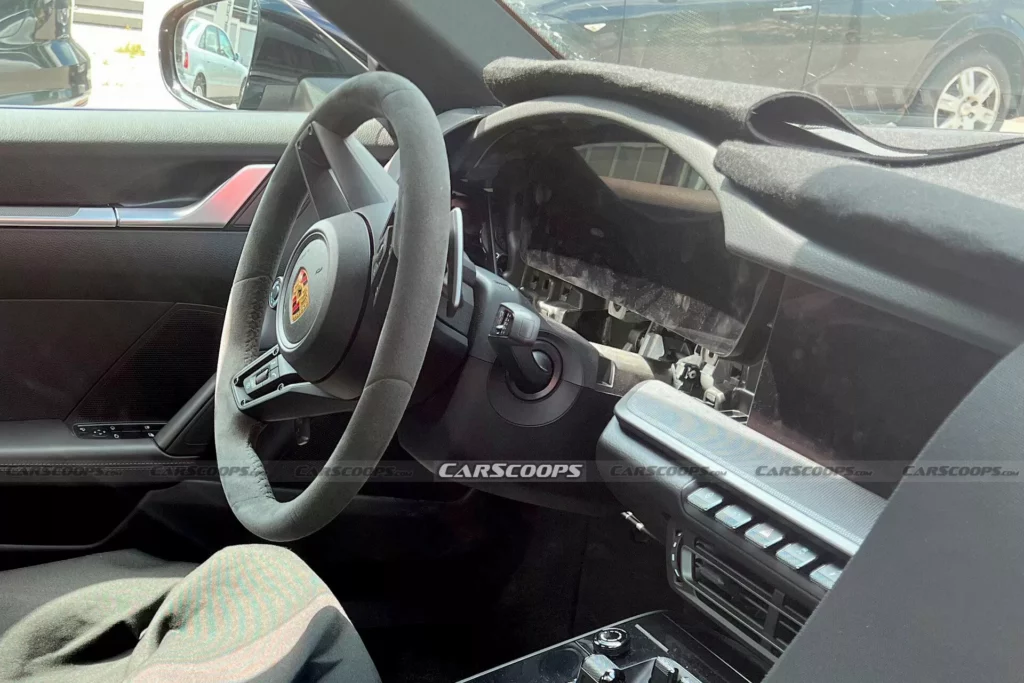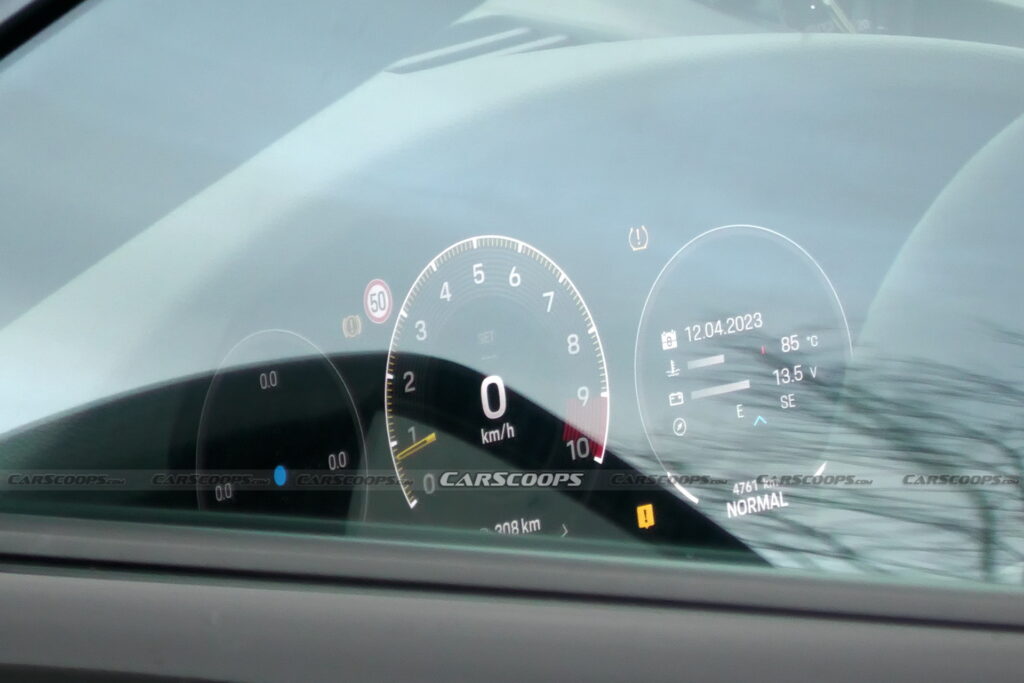Facelifted 911, codenamed 992.2, gains mild- and full hybrid powertrains, a digital dashboard and is on sale this year
4 hours ago

- Porsche confirms new 2025 MY 911 has a “performance hybrid” powertrain.
- 911 GTS with optional Aerokit package, including fixed rear wing, lapped the Nurbrurging 8.7 seconds faster than the old GTS.
- 992.2-generation coupe debuts May 28 live on Porsche’s YouTube channel.
We’re only days away from the May 28 unveiling of the 2025 Porsche 992.2, the first ever electrified 911. While the the iconic coupe won’t look radically different on the outside, a hybrid-assisted flat-six heart will give a boost to certain models, like the new 911 GTS Porsche teased earlier this week.
Though Porsche didn’t come out and explicitly say that it was the new GTS that had lapped the Nordschleife in 7:16.9 with the help of its optional Aerokit spoilers package, it confirmed it in kind. The announcement said that the 2025 car’s time represented an 8.9-second improvement over the old model’s, and we know the outgoing GTS did the job in 7:25.6. One of the teaser photos also showed ‘GTS’ stitched into the headrest of the carbon bucket seat.
More: There’s A Rumor The 2025 Porsche 911 Turbo Will Be Manual And RWD, But Does It Make Any Sense?
If it was a GTS, that means we now know that the mid-ranking 911 will set itself apart from other models via a unique front bumper design featuring a bank of vertical slats, as well as a pair of close-set exhaust tailpipes. Which must make the other, less aggressive-looking prototypes we’ve spied with horizontal intake bars and wider-set pipes, entry level Carrera or Carrera S models.
Intel from well-connected German journo Georg Kacher published in Car and Driver suggests that the Carrera and Carrera S will only gain 11 hp (11 PS) each, taking them to 390 hp (395 PS) and 454 hp (460 PS), probably with the help of mild-hybrid tech.
BorgWarner, a longtime Porsche supplier, recently launched its eTurbo system, whose turbine can be spun electrically to overcome lag before the rush of exhaust gases takes over, and also use those gases to charge its 48v electric system’s battery. We think it’s this BW setup, probably together with an integrated starter generator, that’s going into the new base 911s and GTS.
But Porsche reportedly has bigger plans for other 911 models. The GTS is rumored to be ditching its 473 hp (480 PS) 3.0-liter six for a new 3.6-liter motor that will later have its wick turned up even further for use in the 911 Turbo.
And Porsche has also confirmed that it’s working on a full hybrid, which rumors says is called T-HEV and will combine a 3.0-liter six with an electric motor working on the front wheels. Think of it as Porsche’s answer to the C8 Corvette E-Ray, but turbocharged, and expect it to make over 500 hp (507 PS).

Car and Driver says this full hybrid’s 400-volt system has been co-developed with Rimac, which Porsche part-owns, develops as much as 89 hp (90 PS) of electric boost, and weighs less than 60 lbs (27 kg). That compares well with the 103 lbs (47 kg) difference between today’s two- and four-wheel drive 911s. We also know from BorgWarner’s website that its eTurbo can work with 400v applications as well as milder 48v powertrains.
Hybrid but no PHEV
None of the new electrified 911s will offer a plug-in facility, and they’re unlikely to be able to travel much more than a couple of miles on electric power alone. Intel suggests the battery is a tiny 2.0 kWh pack and, for reference, the Corvette E-Ray‘s engineers talk of 3-4 miles (5-7 km) of gas-free driving being possible with their car’s 1.9 kWh battery.
But creating a part-time EV was never in Porsche’s plans, which instead focuses on using the hybrid system to add power while cutting emissions. And by eliminating the delay between your right foot asking for power and the current turbocharged engines delivering it, the hybrid equipment ought to inject some spark into the driving experience.
“We have more grip, significantly more power, and the spontaneous response of the performance hybrid is a great advantage,” Porsche test driver Jörg Bergmeister said of the GTS after the recent round of hot laps at the Ring.
If there’s a downside, it’s that the full hybrids are though to be PDK-only, though the mild hybrids will still offer a manual option and a choice between two and all-wheel drive.
Phew! Next GT3 says nein, danke to turbocharging
Looking further ahead, the replacement for today’s 4.0-liter GT3 will arrive in 2026, apparently again with naturally aspirated power. But this time it’ll be downsized to 3.6 liters and fitted with mild-hybrid gear, Car Magazine claims, while the GT2 RS is believed to get a full hybrid powertrain pumping out well over 700 hp (710 PS).

Porsche hasn’t expended all of its energy on under-hood changes for the 911. The icon enters its 70th year (the original entered production in September 1964) with the same basic body and structure as the 992 launched in 2018, but with the addition of Porsche’s new LED headlights that can see up to 600 m (1,970 ft) ahead, and an illuminated rear nameplate.
It will also get a full-width digital instrument cluster already seen on its Taycan and Cayenne sister cars and pictured above on a 2027 GT3 prototype.
Carrera, Targa, Convertible, Turbo, GT3, GT3 RS, and GT2 models plus low-volume, high-price specials in the vein of last year’s S/T and 2023’s Sport Classic will be dripped out over the next few years before Porsche launches an all-new 911, reported to be codenamed 994. But even that won’t go fully electric, reports say. While the Boxster and Cayman both turn into EVs later this year, it’ll be the 2030s before the 911 ditches combustion power.
When will it debut?
We’ll update this post with more information as and when we get it between now and the May 28 reveal. The world premiere will be broadcast at 09.00 EST on Porsche’s YouTube channel, and you’ll also be able to catch it here at Carscoops.
